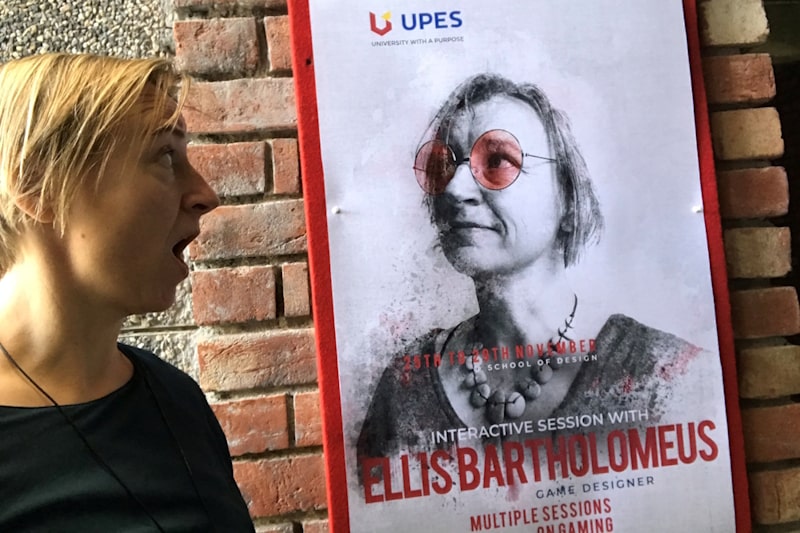See the full “taxanomy” or my researchresult here: who said what is a game >>
Philosopher Bernard Suits (grasshopper; games,life and utopia)
Definition of playing a game; the voluntary effort to overcome unecessary obstacles
Wittgenstein (1953, 1958)
admitted failure in defining the essential characteristics of games, noting that there are no properties that are common to all games and that games belong in the same semantic category only because they bear a “family resemblance” to one another.
Johan Huizinga: (1938) (auteur Homo Ludens)
“Summing up the formal characteristics of play we might call it a free activity standing quite conciously outside ‘ordinary’ life as being ‘not serious’, but at the same time absorbing the player intensly and utterly. It is an acitvity connected with no material interest, and no profit can be gained by it. It proceeds within its own proper boundaries of time and space according to fixed rules and in orderly manner. It promotes the formation of social groupings which tend to surround themselves with secrecy and to stress their differences form the common world by disguise or other means.”
Caillois (1961)
A game is as an activity that is voluntary and enjoy- able, separate from the real world, uncertain, unproductive in that the activity does not produce any goods of external value, and governed by rules
Thornton and Cleveland (1990) noted that the essential aspect of a game is interactivity. de Felix and Johnston (1993) suggested that the structural components of a game, including dynamic visuals, interaction, rules, and a goal, are the essential features. Gredler (1996) stated that the essential elements are a com- plex task, the learner’s role, multiple paths to the goal, and learner control. Malone (1981) argued that there are four characteristics of games that make them engaging educational tools: challenge, fantasy, complexity, and control. Thomas and Macredie (1994) claimed that the core characteristic of games is that actions have no real-world consequences. Baranauskas, Neto, and Borges (1999) stated that the essence of gaming is challenge and risk. Crookall, Oxford, and Saunders (1987) cited game features such as rules, strategy, goals, competition/cooperation, and chance.
Sutton-Smith (1997) “Play As Emotional Survival” + “The Ambiguity of Play”
The rhetoric of play as progress which states that animals and children adapt and develop during play in order to prepare for the adult life.
- The rhetoric of play as fate where the choices and outcomes of our actions are dictated by destiny, luck or whatever.
- The rhetoric of play as power which sees play as a representation of conflict and as a way to establish and enforce the power status of the winning players.
- The rhetoric of play as identity as “a means of confirming, maintaining, or advancing the power and identity of the community of players” [35, p.10].
- The rhetoric of play as the imaginary as applied to creativity and “playful improvisation” in arts and other aspects of life.
- The rhetoric of self where the focus is on the enjoyment or fun aspect of the participating players themselves.
- The rhetoric of play as frivolous as in cases where play is regarded as something unnecessary, even foolish.
Katie Salen + Eric Zimmerman:
‘a system in which players engage in an artificial challenge, defined by rules, that result in a quantifiable outcome’
Greg costikyan (gamedesigner)
A game is a form of art in which participants, termed players, make decisions in order to manage resources through game tokens in the pursuit of a goal
Burghardt all five criteria must be met before the play label can be attached
- “[…] the performance of the behavior is not fully functional in the form or context in which it is expressed; that is, it includes elements, or is directed towards stimuli, that do not contribute to current survival.”
- “[…] that the behavior is spontaneous, voluntary, intentional, pleasurable, rewarding, reinforcing, or autotelic.”
- “[…] that it differs from the ‘serious’ performance of ethotypic behavior structurally or temporally in at least one respect: it is incomplete (generally through inhibited or dropped final elements), exaggerated, awkward, or precocious; or it involves behavior patterns with modified form, sequencing or targeting.”
- “[…] the behavior is performed repeatedly in a similar, but not rigidly stereotyped, form during at least a portion of animal’s ontogeny.”
- “[…] the behavior is initiated when an animal is adequately fed, healthy, and free from stress (e.g. predator threat, harsh microclimate, social instability) or intense competing systems (e.g., feeding, mating, predator avoidance). In other words, the animal is in a ‘relaxed field’.”
Gregory Bateson –
Players perform actions that reference real-world activities. But at the same time, these same actions communicate the fact that the players are merely “at play”. The fact that a player is always actively aware of being at play provides a fresh way of looking at issues such as game immersion.
Ben Sawyer:
“Utility is an important element of serious games. While fun must be derived mostly from the process of play – the premise of play must involve a social contract between the player and the game over its utility toward the (ideally) shared goals of the game (and its creators) and the player.“
Ralph Koster (schrijver ‘the theory of fun”)
“Games (and play) are iconified representations of human experience that we can practice with and learn patterns from”
“Games are puzzles to solve, just like everything else we encounter in life.They are ont the same order as learning to drive , or licking up the mandoline, or learning your multiplication tables. We learn the underlying patterns, grok them fully, and file them away so that they can be rerun as needed.”
“An effective learning environment, and for that matter an effective creative environment, is one in which failure is OK – it’s even welcomed, In game theory, this is often spoken of as the ‘magic circle’: you enter into a realm where the rules of the real world don’t apply – and typically being judged on success and failure is part of the real world. People need to feel free to try things and to learn without being judged or penalised.”
“Games are fun because they teach us interesting things and they do it in a way that our brains prefer: through systems and puzzles”
“With games, learning is the drug”
Amy Jo Kim
A structured experience with rules and goals and it’s fun
Eric Zimmerman + Katie Salen Boek Rules of Play
A system in which players engage in an artificial conflict, defined by rules that results in a quantidiable outcome
Crookall and Saunders (1989)
Key features of simulations are that they represent real-world systems; they contain rules and strategies that allow flexible and variable simulation activity to evolve; and the cost of error for participants is low, protecting them from the more severe consequences of mistakes.
By contrast – Crookall, Oxford, and Saunders (1987)
a game does not intend to represent any real-world sys- tem; it is a “real” system in its own right. Games also contain rules and strategies, and generally when we lose at a game, the costs can be consequential but may be contained within the game world (although noted that when we lose at a game like poker, this distinction may not hold).
Dr. Roni Zeiger (google health): gamasutra
“We need all of you and your expertise to bring the engagement, the fun, the satisfaction, the playing on our emotions in a healthy way, to get us to behave in ways that can really, truly, benefit our health,” Zeiger said. “We can inject the kind of creativity that you all can bring, and not make people decide to do something different and play a game, and instead meet your users where they are, and figure out how to make games more a part of our daily lives.”
Nicole Lazzaro
“People play games not so much for the game itself as for the experience the game creates.” There are four keys that release emotions during play: hard fun, easy fun, altered state, and the people factor.
Bowman, R. F. (1982). A Pac-Man theory of motivation
Ultimately, Bowman concludes that “Pac-Man‘s addictiveness would be explained as follows: It is an action system where skills and challenges are progressively balanced, goals are clear, feedback is immediate and unambiguous, and relevant stimuli can be differentiated from irrelevant stimuli. Together, this combination contributes to the formation of a flow experience” (p. 15).
“…video gamesmanship represents conscious, deliberate mental and physical activity.
It promotes active learning by shifting players into the participant role. Each strategic movement generates a visible response. Moreover, the immediacy of reciprocal responses reduces the sense of distance between one’s efforts and one’s successes.
External stimuli are controlled to focus and define exploration and problem-solving. Challenges are matched to participants’ developmental levels to create a psychological sense of flow. Relatedly, one’s efforts count for something: status, self-determination, and sustained enjoyment” (p. 16).
Malone and Lepper (1987)
have defined intrinsic motivation more simply in terms of what people will do without external inducement. Intrinsically motivating activities are those in which people will engage for no reward other than the interest and enjoyment that accompanies them. Malone and Lepper have integrated a large amount of research on motivational theory into a synthesis of ways to design environments that are intrinsically motivating. This synthesis is summarized in Table 5.1. As that table shows, they subdivide factors that enhance motivation into individual factors and interpersonal factors. Individual factors are individual in the sense that they operate even when a student is working alone. Interpersonal factors, on the other hand, play a role only when someone else interacts with the learner. These are discussed in detail on the following pages.
Green, Brock & Kaufman (2004)
Transportation is the process of becoming immersed in a narrative world, and transportive media are typically the most enjoyable. Games, both digital and non-digital, are interactive and therefore more likely to facilitate transportation. “Interactive media may be particularly transporting, and thus particularly enjoyable, forms of entertainment because they allow users to easily leave their physical and psychological realities behind and become fully immersed as an active participant in the narrative of an alternate ‘virtual’ reality”. This may explain why games are so popular. Green, Brock and Kaufman also make an important point that enjoyment has consequences. Individuals who have enjoyed a particular media are more likely to seek that experience out in the future.
R. Garris et al. (2002)
Based on a review of the literature, we conclude that game characteristics can be described in terms of six broad dimensions or categories: fantasy, rules/goals, sensory stimuli, challenge, mystery, and control. Any type of game can be described in terms of these six key dimensions. Moreover, they provide a common vocabulary for describing and manipulating the core elements of games for instructional purposes.
Goals should be clearly specified, yet the possibility of obtaining that goal should be uncertain. Games should employ progressive difficulty levels, multiple goals, and a certain amount of informational ambiguity to ensure an uncertain outcome. Performance feedback and score keeping allows the individual to track progress toward desired goals. Finally, goals must be meaningful to the individual. Linking activities to valued personal competencies, embedding activities within absorbing fantasy scenarios, or engaging competitive or cooperative motivations can serve to make goals meaningful
…
Since a state of confusion is positively correlated with learning events, it will be important to have the tutor’s actions manage the learner’s confusion productively. Some learners tend to give up when they are confused because they attribute their confusion to having the trait of low ability (Dweck, 2002; Meyer & Turner, 2006); these learners need to be encouraged and also informed that working on the problem will be fruitfull and that confusion is a sign of thoughtfull progress. Other learners get motivated when they are confused because it is a signal that they are being challenged and they have the confidence in their ability to conquer the challenge. These relations between emotions and complex learning are of course quite relevant to the design of serious games that promote deep learning.
et al = Elliot & Harackiewicz, 1994; Lepper, 1985; Lepper & Chabay,1985; Lepper, Woolverton, Mumme, & Gurtner, 1993; Malone, 1980, 1981; Whitehall & McDonald, 1993; Wishart, 1990, Day, 1982; Loewenstein,1994; Malone & Lepper, 1987; Terrell, 1990; Cordova & Lepper, 1996; Hannafin & Sullivan, 1996; Kinzie, Sullivan, & Berdel, 1988; Reigeluth & Schwartz, 1989; Simons, 1993; Steinberg, 1989; Wishart, 1990, Hereford & Winn, 1994; Rieber, 1991; Surber & Leeder, 1988; Thurman, 1993; Driskell & Dwyer, 1984; Ricci, Salas, & Cannon- Bowers, 1996; Schloss, Wis- niewski, & Cartwright, 1988; Parker & Lepper, 1992
Bernard Suits (philosopher): “Playing a game is the voluntary attempt to overcome unnecessary obstacles”
Chris Crawford: In The Art of Computer Game Design, contrasts what he call “games” with “puzzles.” Puzzles are static; they present the “player” with a logic structure to be solved with the assistance of clues. “Games,” by contrast, are not static, but change with the player’s actions.
Seth Priebatsch:
- Appointment dynamic: a dynamic in which to succeed, one must return at a predefined time to take a predetermined action
- Influence and status: the ability of one player to modify the behaviour of another’s actions through social pressure
- Progression dynamic: a dynamic in which success is granularly displayed and measured through the process of competing itemized task
- Communal discovery: a dynamic in which an entire community is rallied to work together to solve a problem
Greg Costikyan (1994) A game is a form of art in which participants, termed players, make decisions in order to manage resources through game tokens in the pursuit of a goal.
Wang, Shen en Ritterfelt – In general, five fun factor categories consistently appeared on top in the overall frequency ranking as well as the frequency rankings in positive, nega- tive, and neutral comments: overall game design, visual presentation, audio presentation, complexity and diversity, and control.
Chris Crawford, ‘people games’ are games where the goals are of a social nature and focus on interactions with well-defined characters. They are described in Chris Crawford on Game Design as follows:
I dreamed of the day when computer games would be a viable medium of artistic expression — an art form. I dreamed of computer games expressing the full breadth of human experience and emotion. I dreamed of computer games that were tragedies, games about duty and honor, self-sacrifice and patriotism. I dreamed of satirical games and political games; games about the passionate love between a boy and girl, and the serene and mature love of a husband and wife of decades; games about a boy becoming a man, and a man realizing that he is no longer young. I dreamed of games about a man facing truth on a dusty main street at high noon, and a boy and his dog, and a prostitute with a heart of gold.
Gamification Research Network – Mastering challenges. We enjoy games because games are purpose-built to provide opportunities to overcome a challenge – a puzzle to solve, a chasm to jump, a monster to beat –, and the joy of succeeding in doing so.





